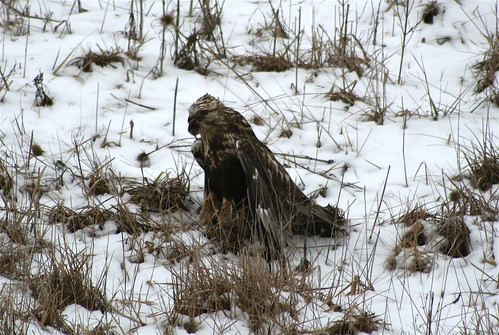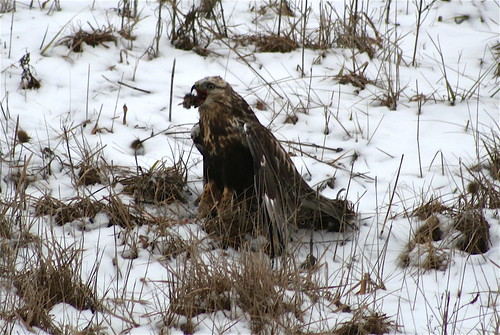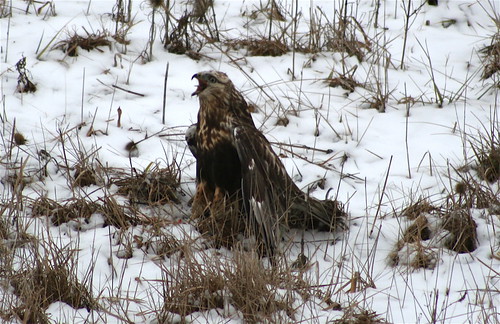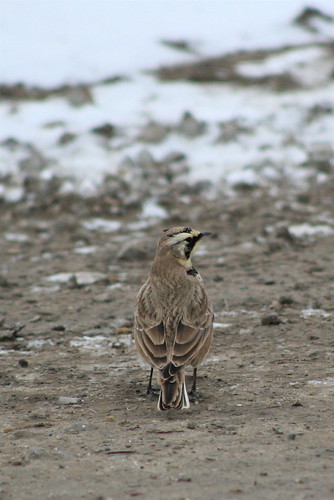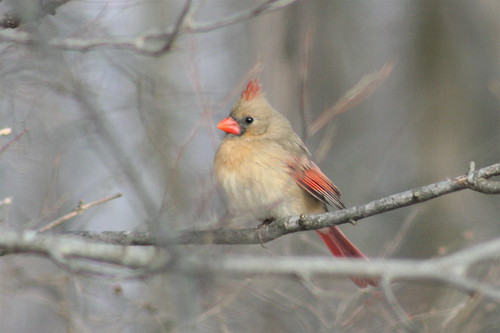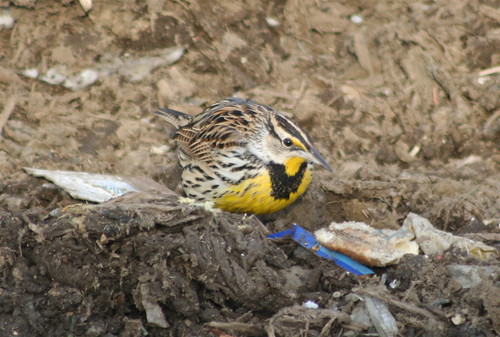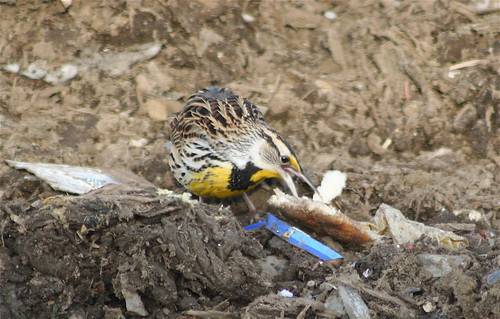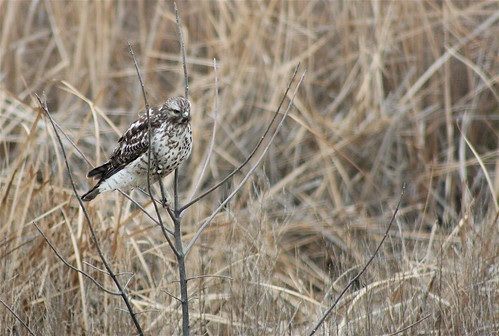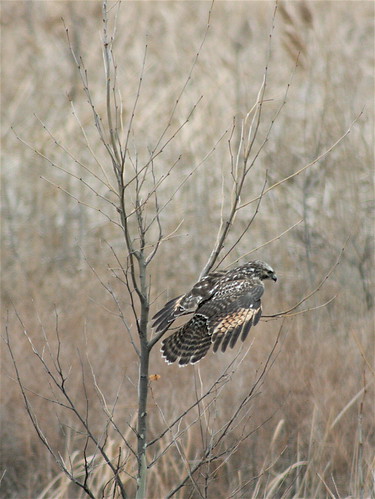It's time for round two with the bright students from the de Paul School. They have more questions and hopefully I have some answers.
Q: How many kinds of ducks have you seen at the landfill?
A: I have seen six kinds of ducks at the landfill. Mallards and Wood Ducks are the most common, and I see several Blue-winged Teal during migration. Lately there haven't been any ducks at the landfill because it is so cold. All the ponds are frozen so the ducks must be paddling around somewhere else.
Q: Do you have a pet bird?
A: No, but I'm trying to convince my wife to let me have a parrot.
Q: Of the birds that you have seen at the landfill, which has the strongest talons?
Q: What is the biggest bird you have seen at the landfill?
A: I have the same answer for both of these questions. Usually the birds with the strongest talons are the biggest birds. The biggest bird I have seen at the landfill is a Bald Eagle. Most of you are probably familiar with Bald Eagles. They are the national bird and are a symbol of the United States, showing up on money and on the national seal. Bald Eagle populations declined in the 1950's and 1960's because of the use of the pesticide DDT. However, due to the Endangered Species Act, the Bald Eagle is now recovering and is becoming more and more common. They are expanding their range into the places where they historically used to live, so you can count on seeing more and more of these majestic birds in the future.
Q: How many different kinds of birds have you seen migrate through the landfill?
A: There are several types of birds that have migrated through the landfill. The most common types are warblers, sparrows, ducks, and blackbirds. But some of the coolest migrants are birds you may not see too often. My favorite is the Common Nighthawk. They are ground nesting birds that are superbly camouflaged. They are seen most often in the fall flying in loose groups low over the landfill.
Q: Do any birds follow you around for food?
A: Quite the opposite! Most birds fly away when they see me coming. And why follow me around for food when they have an all you can eat buffet of garbage!
Q: How many kinds of ducks have you seen at the landfill?
A: I have seen six kinds of ducks at the landfill. Mallards and Wood Ducks are the most common, and I see several Blue-winged Teal during migration. Lately there haven't been any ducks at the landfill because it is so cold. All the ponds are frozen so the ducks must be paddling around somewhere else.
Q: Do you have a pet bird?
A: No, but I'm trying to convince my wife to let me have a parrot.
Q: Of the birds that you have seen at the landfill, which has the strongest talons?
Q: What is the biggest bird you have seen at the landfill?
A: I have the same answer for both of these questions. Usually the birds with the strongest talons are the biggest birds. The biggest bird I have seen at the landfill is a Bald Eagle. Most of you are probably familiar with Bald Eagles. They are the national bird and are a symbol of the United States, showing up on money and on the national seal. Bald Eagle populations declined in the 1950's and 1960's because of the use of the pesticide DDT. However, due to the Endangered Species Act, the Bald Eagle is now recovering and is becoming more and more common. They are expanding their range into the places where they historically used to live, so you can count on seeing more and more of these majestic birds in the future.
Q: How many different kinds of birds have you seen migrate through the landfill?
A: There are several types of birds that have migrated through the landfill. The most common types are warblers, sparrows, ducks, and blackbirds. But some of the coolest migrants are birds you may not see too often. My favorite is the Common Nighthawk. They are ground nesting birds that are superbly camouflaged. They are seen most often in the fall flying in loose groups low over the landfill.
Q: Do any birds follow you around for food?
A: Quite the opposite! Most birds fly away when they see me coming. And why follow me around for food when they have an all you can eat buffet of garbage!




 10:34 PM
10:34 PM
 Ryan Ankeny
Ryan Ankeny






